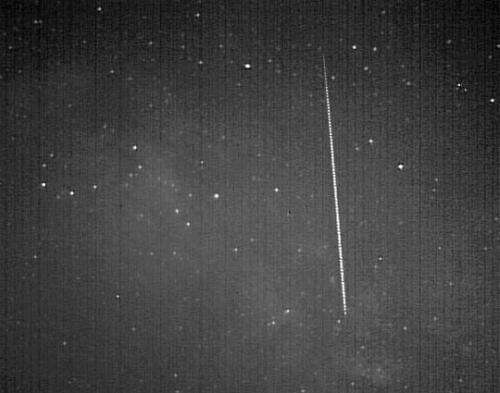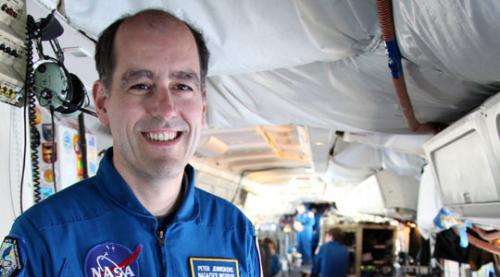SETI scientist will observe meteor shower from above the clouds

SETI Institute scientist Peter Jenniskens first predicted the May 23 Camelopardalid meteor shower 10 years ago. He is now ready to solve the mystery of the comet's past activity.
This never before seen meteor shower would be caused by debris shed by Comet 209P/Linear as it passed through the inner solar system every 5 years during the 18th, 19th, and 20th centuries. Scientists want to know how such comets behave over time as they cause many of our meteor showers.
The SETI Institute will send Jenniskens and his observing team to the skies above 20,000 feet to observe the event above the clouds and atmospheric dust. Jenniskens will also study the shower with his autonomous meteor shower surveillance stations at Lick Observatory, Fremont Peak Observatory and in Sunnyvale. The flight will originate from Palo Alto, Calif. at 10:30 PM PDT, head towards Seattle, and return to Palo Alto approximately four hours later.
Extraordinary Sight

Friday night's encounter with the comet debris will shed light on the mystery of whether the comet was active in the past. Depending on that answer, the shower could be a spectacular display, or a no-show informing us that the comet moved through the centuries in tact, shedding little debris for us to observe. Either outcome is scientifically important.
The best viewing time for the possible shower is a narrow time interval between 2:00 and 4:00 a.m. EDT, and between 11:00 p.m. and 2:00 a.m. PDT the night of Friday, May 23. The meteor shower will be streamed and archived through the following sites:
- SETI Institute Meteor Site: meteor.seti.org
- Ustream: www.ustream.tv/channel/cal-astro
Provided by SETI Institute




















